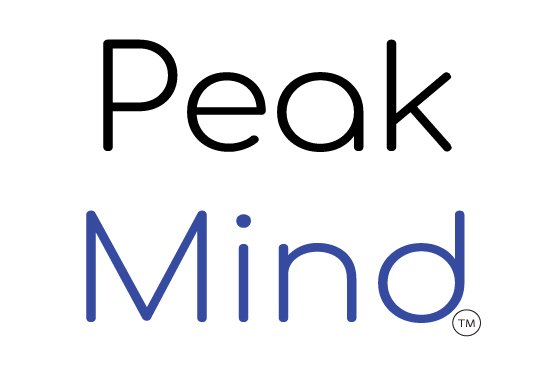Stress Statistical Data
Educating staff on bio-data and it’s impact on workplace culture is crucial.
Crucial for several reasons, which can be understood through a combination of qualitative and quantitative data sets.
In today’s workplace climate, most of us are dealing with some level of stress. Some are chronically stressed to the point of burnout, exhaustion, or worse a new mental health condition. And some are just struggling. Causing it hard to cope if we do not have the proper tools or training to cope in a healthy way.
What we know about stress is it does not discriminate. If you have a brain, you have a risk factor for chronic stress, chronic episodic stress or at minimum the everyday acute stressors. Over 25% of US adults recently stated they are so stressed that they cannot function. And most do not know why, or what to do about it. Would you know what to do? Or do you find yourself searching online asking “how do I lower stress?”
At Peak Mind, we track the level of a user's stress via surveys, Artificial Emotional Intelligence, Machine Learning, and via biometric measurements via hardware integrations like VR headsets and EEG bands. Why? So we can answer your question “how much stress is bad for you?”
In this article, we list out some of our findings and interpretations during our years of research and development. Asking the question, “Who is most stressed in America?” And “What jobs are the most stressful?”
Key Statistics and Interpretation:
When it comes to biometrics, some that Peak Mind measures are: Heart Rate, Heart Rate Variability, Cognitive Load, Pupil Dilation, EEG brain waves and more. Heart Rate is the calculation of the number of heart heats per minute that pulse through your body. Lower rates typically indicate more efficient heart. Heart Rate Variability (HRV) is one key indictor we use to see how much stress you body has been carrying. It is the calculation of the variation in time between heartbeats, usually tracked in milliseconds (ms). A higher measurement usually means better overall health.
Stress varies by type and meaning. At Peak Mind, we typically speak about chronic stress. The type that lingers for hours, days, month and even years sometimes. Versus the acute stressors that most of us find ourselves in when we stub our toe or step on a leggo. Stress triggers our body’s fight or flight sensations in our Autonomic Nervous System (ANS). And our bodies biometrics can show us that stress level via lowering or raising HR, HRV, and dilating our pupils or constricting them. We just need to know how to measure them, track them or how to read the chart our smart watches produce.
For HRV here are two measurements and what they mean:
The SDNN values mostly fall within a healthy range, but the lower end suggests periods of reduced HRV, which can be indicative of stress or lower adaptability of the autonomic nervous system.
The RMSSD values are somewhat elevated, especially at the highest points, which generally indicates a good level of parasympathetic activity and relaxation. However, the lowest RMSSD values approach levels that could signal potential stress or strain.
Educating staff on emotions (and the underlying stress hormones) and their impact on workplace culture is vital for enhancing emotional intelligence, mental health, and overall productivity. Emotional education fosters better interpersonal relationships, reduces stress, and promotes a supportive and inclusive environment. It leads to improved leadership, decision-making, and conflict resolution, which are essential for a positive workplace culture.
From an economic perspective, emotional education boosts productivity, reduces absenteeism, and increases job satisfaction, leading to lower turnover rates and attracting top talent. Implementing training programs, support systems, and policies that promote emotional well-being can create a resilient, engaged, and productive workforce, ultimately benefiting both employees and the organization.
This is an example of HRV biodata that we process using our proprietary AI algorithm while the user spent 8-minutes in one of our VR simulations:
Interpreting bio-data can be tricky. What is a significant change and what matters? Most of us are not educated on our stress loads, let alone how our biometrics play into it.
For instance, the visualization and interpretation of the heart rate data over time below has been created, with normal adult heart rate ranges marked and an indicator for when the heart rate exceeds 5% above the average. Significant fluctuations in heart rate, especially those exceeding 5% above the average, may suggest moments of stress, physical exertion, or other factors affecting the individual's cardiovascular system. Monitoring such changes can provide insights into an individual's overall well-being and stress levels.
This is an example of HR biodata that we process using our proprietary AI algorithm while the user spent 8-minutes in one of our VR simulations:
Significant Decreases (>5%) which are sharp decreases, might indicate a transition to a more relaxed state or recovery phase. However, if these are too frequent, they could indicate an abnormal cardiovascular response. Whereas, consistent Minor Fluctuations are small percentage changes (below 5%) which typically indicate normal physiological variations, and might not be significant enough to impact well-being adversely. So, small and big changes can mean many things, which adds to the confusion when monitoring many biometrics.
Phew… need a bio-break now?! And we just discussed a small fraction of the bio-data that our company analyzes and measures so you don’t have to stress over it!
We wish you well on your journey to well-being. If you are finding this journey hard to implement within your organization, let Peak Mind help you today. We are here to help make things simpler for you and provide the tools necessary to excel at work again!
Demo or Schedule a time to discuss how we can help you.
#BeWell and #LetsPeak
@PeakMindOnline





